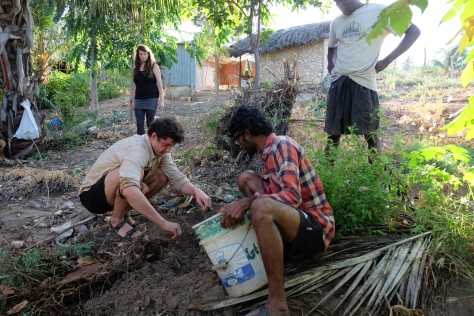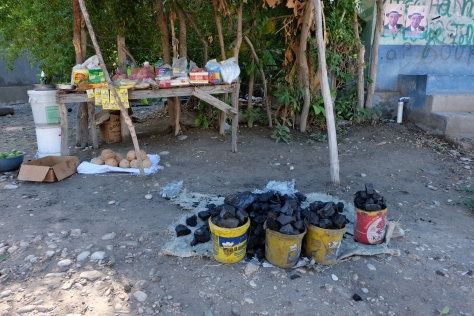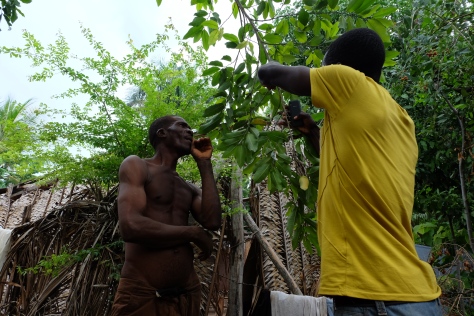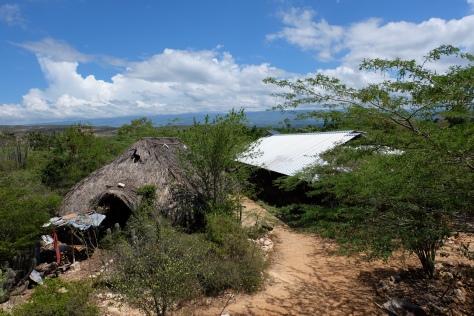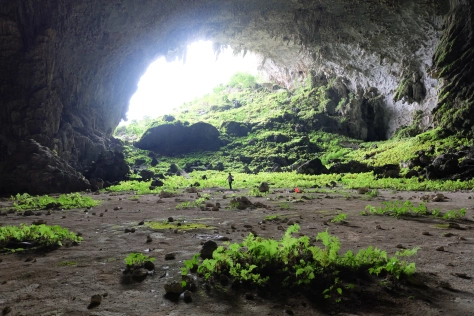
As part of my research on the nettle family, Urticaceae I became aware of plants growing in the entrance caverns of caves several years ago and for over a year now my collaborators at the Guangxi Institute of Botany, China lead by Professor Yigang Wei and I have been working on documenting the full diversity of this unusual flora. This lead us to think about whether these plants may have become adapted to life in caves, in particular the relatively constant climate and low light. Especially for species which grow amongst the lowest light levels at the back of caverns where they are growing in a fraction of the light they could be expected to receive in a forest. We therefore applied for a grant from the Guangxi Key Laboratory of Plant Conservation and Restoration Ecology in Karst Terrain, and the Foreign Experts Bureau to undertake some preliminary work to document the climate, light and photosynthesis of the plants in the caves.
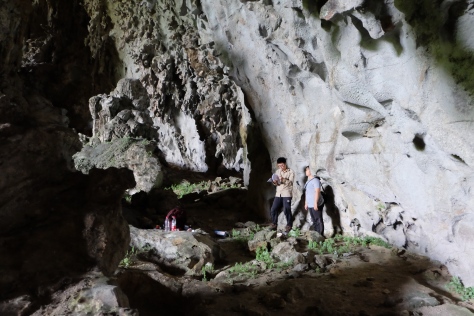
We selected the Yangtse cave as we know the diversity of plants that grow there (ten species of nettle alone), we have three data-loggers recording temperature and humidity in it and it is close to a town where we can spend the night. It is also a spectacular and beautiful place to spend several days working. The aim of our work was to collect the data necessary to test the hypothesis that the plants growing within the entrance cavern of the Yangtse cave exhibit different photosynthetic performance than the same or congeneric species growing outside of the cave. To do this we randomly selected individuals of three species of nettle in the genus Elatostema, one species of Begonia and a species of fern at four different locations in the cave, the back, midway into the entrance cavern, at the entrance and outside of the cave. We also brought two species of Elatostema from the living collection at the Guangxi Institute of Botany to compare their photosynthesis performance with members of the same species that had grown up within the cave. This was to get some indication as to how plastic their response was.
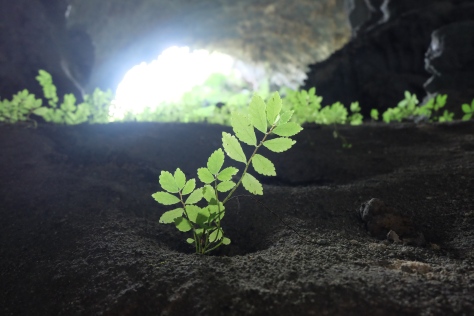
Each plant was connected to a hand-held PAM chlorophyll fluorometer, an incredibly sensitive device that can measure several key outputs of photosynthetic reactions in the chloroplasts as they take place. By comparing our study plants to those growing outside of the cave and from the scientific literature we hope to see whether cave-dwelling plants differ from non-cave plants in some of those parameters, and whether those differences are dependent upon what kind of plant they are. These parameters include the efficiency of photosynthesis, that is how much of the light energy is harnessed by the photosynthetic reactions, how much is dissipated and how resilient the photosynthetic apparatus is to changing light intensity. If we find a difference between cave and non-cave dwelling plants then taken together these measurements can provide some indication of which group of photosynthetic reactions are leading to these differences.

